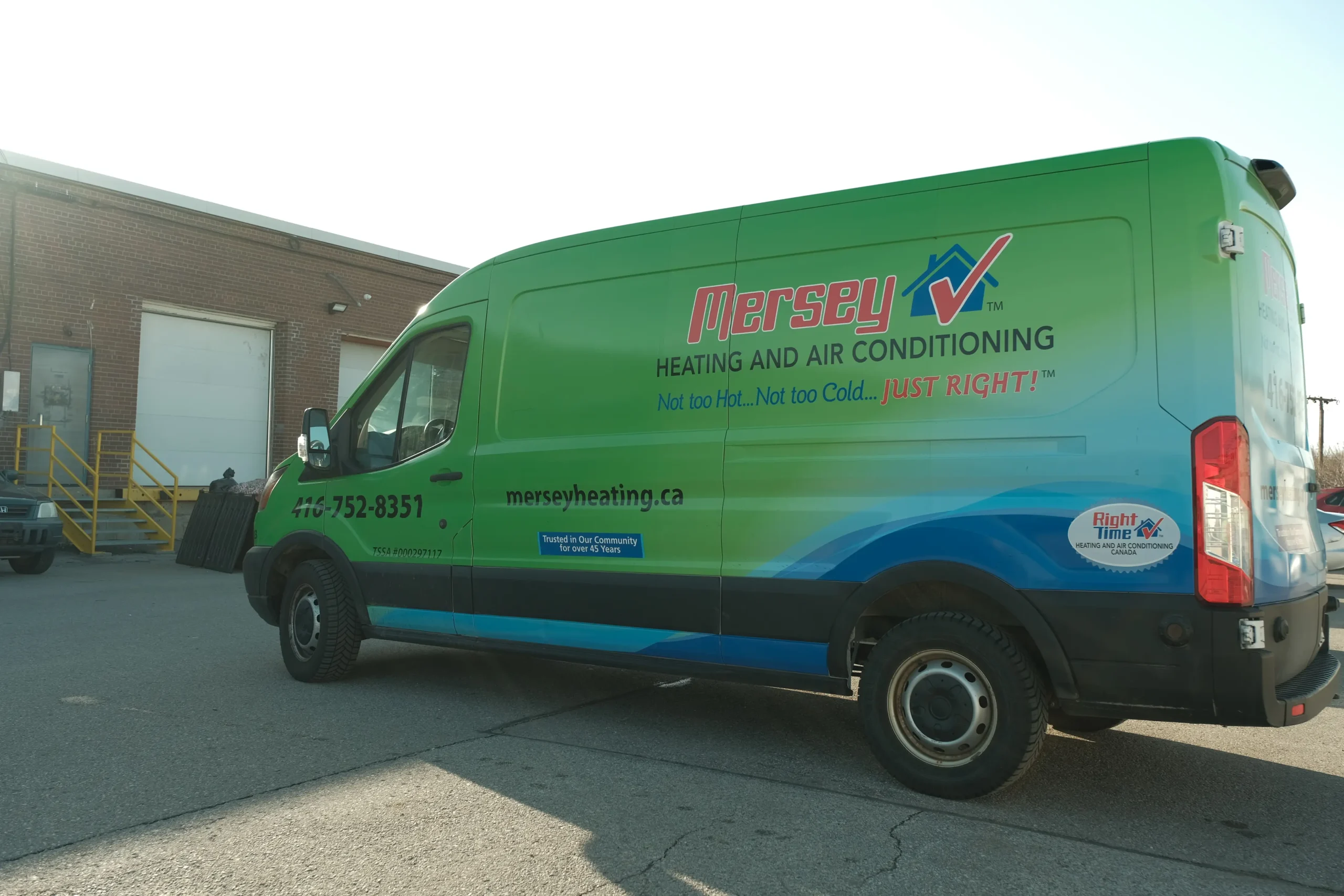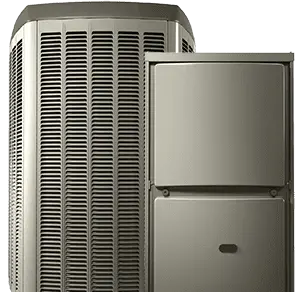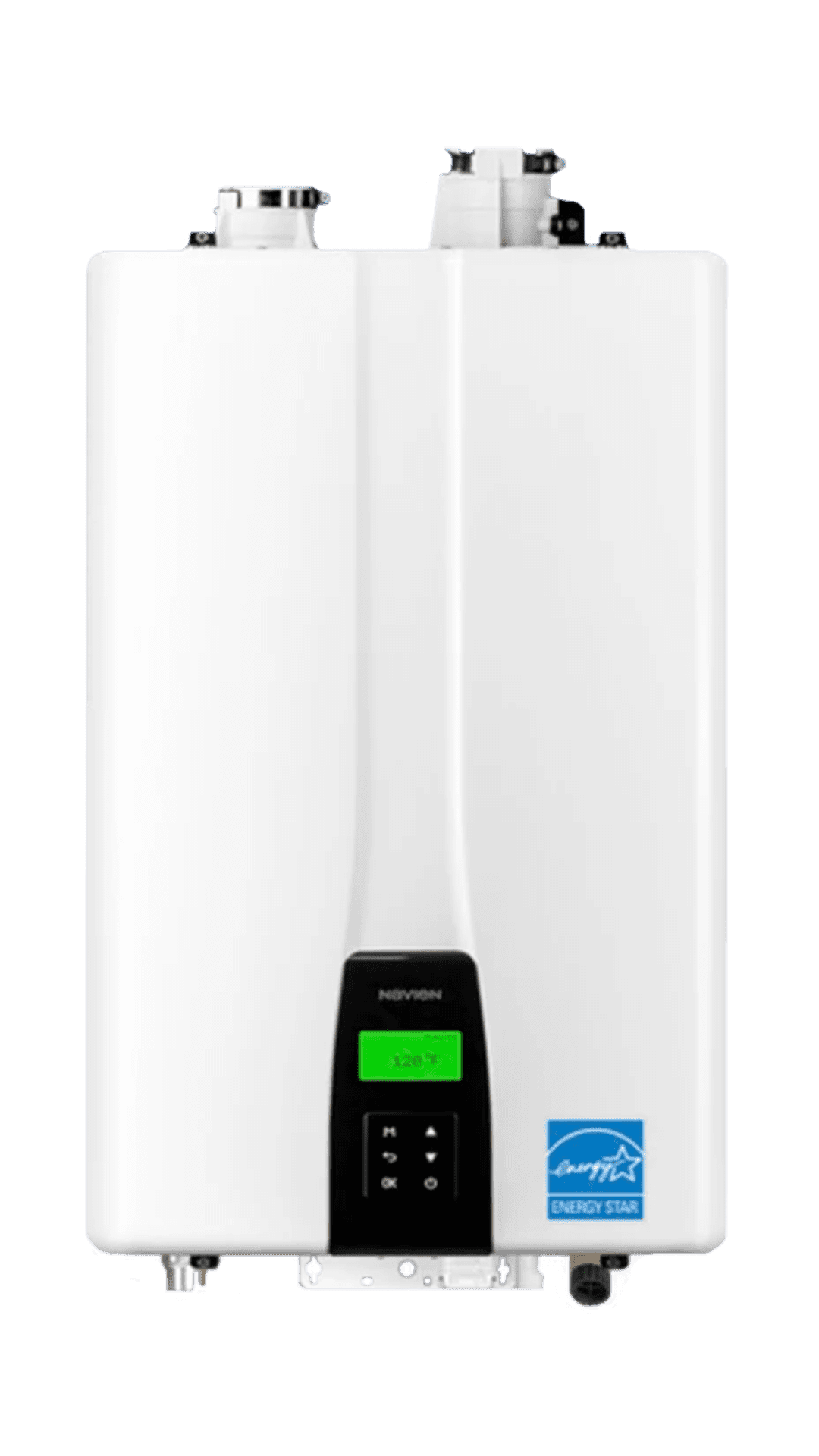GTA Furnace Room Safety in Fall: Storage, Clearance & Combustion-Air Basics

In GTA homes, the furnace room often becomes the “extra storage” room. It gets seasonal décor, renovation leftovers and family gear. That is fine until it starts blocking air. Your furnace is a fuel-burning appliance. It needs safe clearances, air to burn, and a path for return air. Heading into fall, it is smart to reset that space so the furnace can breathe and so a Mersey technician can actually get to it.
Why Fall Clutter Is a Problem for Furnace Rooms
Furnaces need three basics to run correctly:
- Combustion or make-up air so the burner has enough air
- Supply/return airflow so warm air can circulate through the home
- Service access so a technician can inspect, test and clean
When we stack boxes, paint, totes or laundry in front of the furnace, we can reduce or block one of those. In smaller GTA townhomes and semis, the furnace is sometimes in a narrow utility closet with a louvred door. If that louvre is blocked outside by storage or blocked inside by boxes, the furnace may not get enough air. NRCan’s seasonal furnace guidance recommends keeping combustion-air openings and mechanical/utility rooms free of obstructions, and the TSSA/Ontario gas code requires that appliances have an adequate air supply. Health Canada adds that anything that could affect combustion or venting should be fixed right away to reduce the risk of carbon monoxide.
One-Evening De-Clutter Checklist for GTA Homes (Homeowner-Safe)
You can do this in 20–30 minutes.
Step 1: Pull storage back.
Move boxes, totes, paint cans, gasoline, cleaning products and kitty litter away from the furnace and water heater. If the manufacturer’s clearance sticker is readable, follow it. If not, keep a clear ring of space around the appliance so air can move and a tech can reach panels.
Step 2: Keep the door and louvres clear.
If the furnace room has a louvred door or an undercut, that is usually there to bring combustion or make-up air into the space. Do not hang coats, mops or brooms on that door. Do not stack bins against it on the hallway side. The point is to protect the free opening, however your system was installed, not to reduce it with storage.
Step 3: Find any combustion-air or make-up openings.
Some GTA basements have a dedicated grille or duct that brings fresh air into the mechanical room. Make sure it is not blocked by storage, laundry baskets or seasonal décor. Do not tape it over because it “feels drafty.”
Step 4: Keep return air paths open.
If there is a return grille near the furnace or in the same basement area, keep it free of obstructions. Blocking a return can change how the system pulls air and can raise static pressure.
Step 5: Make space for service.
Technicians need to get to the front panel, the disconnect and the vent/condensate side.
Leaving a clear walking and working path is part of fall prep.
This is all visual and housekeeping level. Do not open sealed furnace panels, do not adjust gas piping and do not move venting.
Combustion-Air Basics for GTA Furnace Rooms
GTA homes can have different setups, but the rule is the same: do not block the air.
- If you see a round duct entering the furnace room from outside, treat it as essential and keep the area around that opening clear of boxes, laundry, or shelving.
- If the furnace pulls air through a louvred or undercut door, keep that door style and keep the louvres/undercut unobstructed on both sides, so the designed air opening can do its job.
- If you added a laundry area to the same space, remember that dryers also use air, so crowding the room can cause the dryer and the furnace to compete for it, increasing the risk of spillage/back-drafting on atmospherically vented equipment.
If you are not sure how your system gets combustion air, tell Mersey during the visit, and they can trace it for you.
Storage Items That Do Not Belong Beside the Furnace
Some items are more than just “clutter.” Keep these out of the clearance zone:
- Paint, solvents, adhesives and aerosols
- Gasoline, lawn equipment and propane cylinders
- Cardboard and paper storage
- Fabric items that can block louvres or door undercuts
- Tall plastic bins stacked high enough to block return air
In Ontario, fuel-burning appliances should not have flammables or combustibles stored in their working/service space, especially paints, solvents, gasoline, or propane cylinders.
Store them on another wall or in another room. The goal is a furnace room that is easy to walk into, easy to service, and free of fumes or flammables.
When to Call Mersey (Pro-Only Work)
Call Mersey if:
- You cannot find or read the manufacturer’s clearance label
- You are not sure the room has enough combustion/make-up air
- The furnace room now shares space with a gas water heater, dryer or HRV/ERV
- A previous reno added doors/walls that might have reduced airflow
- You have had a CO alarm or an unusual furnace shutdown
A Mersey technician can confirm clearances against the OEM manual, check intake/exhaust piping, test for safe operation and tell you whether more combustion air is required. They can also document the room setup so future Maintenance Plan visits can re-check the same items.
Tie It to a Mersey Fall Safety/Maintenance or Maintenance Plan Visit
Once the room is decluttered, schedule the furnace. When you book Mersey’s fall safety or maintenance visit, tell them you also want the furnace room airflow checked. They can:
- Inspect the furnace, blower and condensate side
- Confirm return air paths are not blocked
- Verify combustion/make-up air sources for the room
- Check nearby fuel-burning appliances sharing the space
- Test CO alarms and confirm you are following manufacturer/local code guidance
- Add the room-clearance check to your Maintenance Plan so it is reviewed before every heating season
Test CO alarms regularly and follow manufacturer or local code guidance, especially if you have a tight furnace room or a louvred mechanical-room door.

